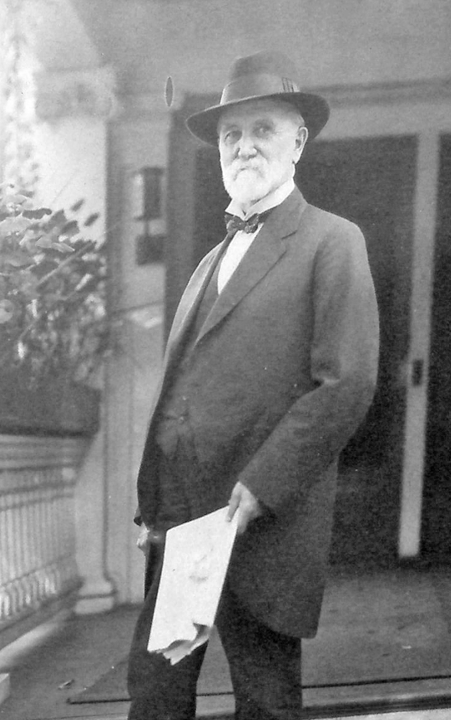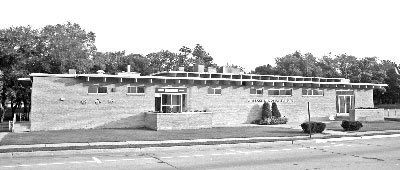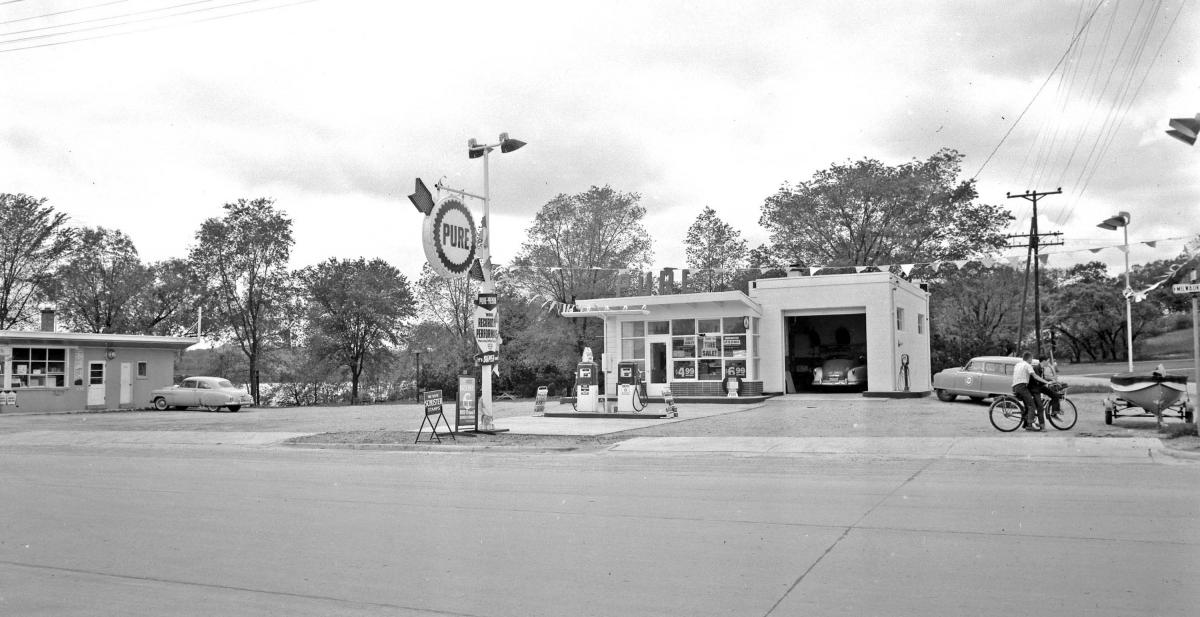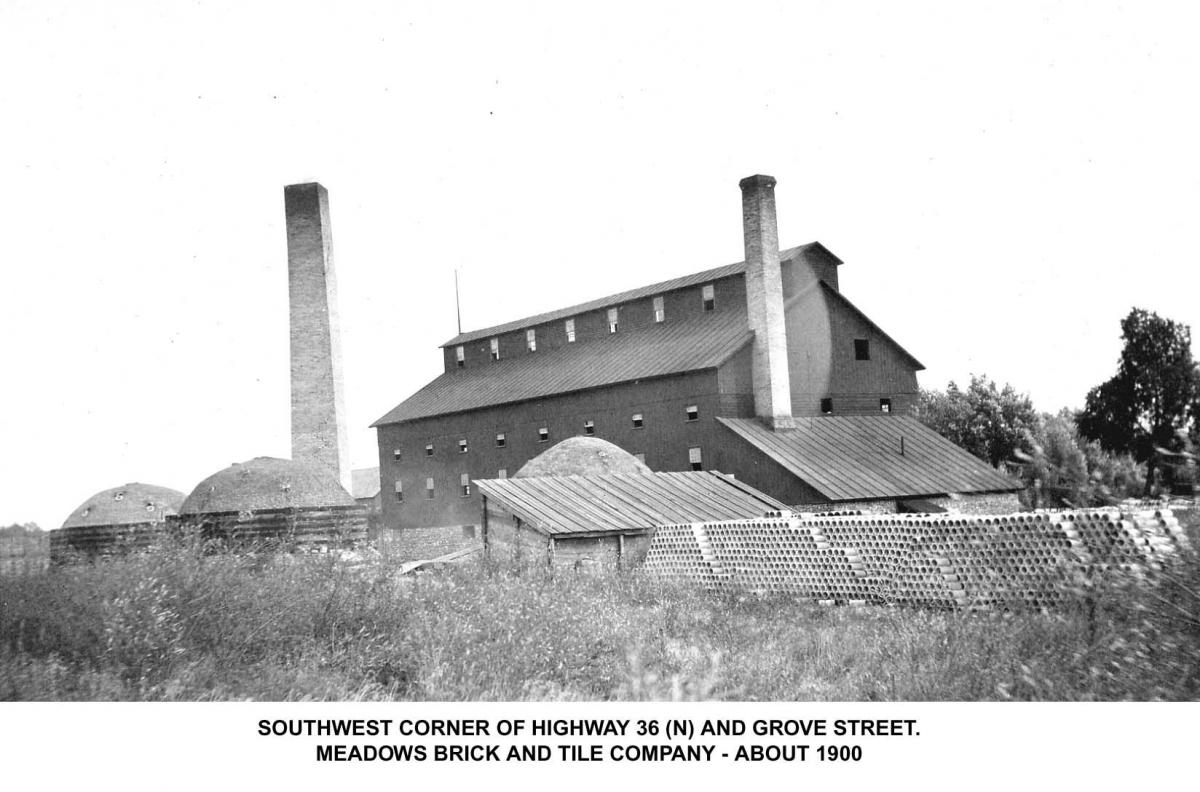Newsletter - September 2009
Burlington Historian

September 2009

Museum Displays Taking On Both New and Old Looks
Now that the Museum interior has been renovated, we are in the process of installing displays. Some previous displays are being re-created, some are being updated or added to, and some new ones are being created. We have a general plan as to where displays will go, but are making adjustments as we go along.
The Board of Directors has not yet determined when the Museum will be officially re-opened, but is considering the possibility of opening the Museum to visitors in stages as groups of displays are finished.


Some of the new and re-created displays. Photo at right shows Don Zurn, Burlington summer resident and self-described "museum-phile," who is helping with the displays.

Did You Know . . . ?
. . . that Congressman Henry Allen Cooper (R-Wis.), who was born in Spring Prairie, moved to Burlington as a child, and grew up here, and after whom Cooper School is named, was one of only three members of the U.S. House of Representatives to rise on April 6, 1917, to tell the Congress of the horrors of war and to ask the Congress to hesitate before it voted the United States into the First World War. The other two were Speaker of the House Champ Clark (D-Mo.) and House Majority Leader Claude Kitchin (D-N.C.).
Once the country engaged in the war, however, no House members were more active in supporting the government and helping the U.S. and its allies win the war than Congressman Cooper, who had been a teenager at the time of the Civil War, and the other two Members.
President’s Message
Summer is moving along fast toward its final stages. The renovation of our Museum is also in the final stages and the many hours of planning and labor are starting to show great results.
Looking back to the past is part of being an historian. Looking to the future is a critical part of sustaining our past. It is so easy to tear down a building and put up a parking lot. I always try to promote community involvement by reminding residents to partake in civic events and social projects and enjoy the many rewards it can offer.
Burlington is a great community with many fine citizens and activities. I know the early settlers of the area would be proud to see the way our community has progressed by continuing the planning and hard work that has passed down through generations.
Enjoy the rest of the summer season.
Dennis Tully
Veterans Terrace Takes Place of Veterans Memorial Building
After several years of declining use and "aging problems," Burlington's 1960s Veterans Memorial Building has been transformed into Veterans Terrace. The grand opening of the attractive new building was held Sunday, August 30. Included in the new building is a World War I display that includes several artifacts and photos from the Historical Society's collection.
Below is the Veterans Memorial Building as it appeared in 1971 and the Veterans Terrace in September 2009.


Christmas Program on December 13, 2009, to Feature "Christmas Tree Ship" Author
The Society will present a Christmas program on Sunday, December 13, 2009, at 1:30 p.m., featuring Rochelle M. Pennington, award-winning author of "The Christmas Tree Ship," "The Historic Christmas Tree Ship," "An Old-Fashioned Christmas," and other books.
The location of the program has not yet been determined.
Early Industry Office Building Razed Here
(This article is from the Standard-Press of December 6, 1956).
The passing of an era in Burlington history was completed recently, when the building, most recently used as a Pure Oil service station, was razed a couple of weeks ago to make way for a new station along the new highway. The building at the corner of Milwaukee avenue and Grove street served as the office of the Burlington Brick and Tile company.
The razed building was the last remnant of a Burlington industry that was founded in December, 1886, when the Burlington Brick and Tile company was incorporated. The capital of the new firm was $30,000. The first share of stock was issued to the firm's first president, Edwin Sumpter, and was dated January 1, 1887. Dr. A. L. Buchan was the first secretary of the firm.
Other persons who associated with the firm in the early years were Stephen Bull, Samuel Buchan, Matthew Dawson, William Meadows, William Bristol, George Meadows, and Edward Brook, father of Mrs. Howard Newell, who succeeded Dr. Buchan as president.
Brick Used Here
Brick manufactured by the firm was used in the construction of St. Mary Catholic church and St. John the Divine Episcopal church as well as in the construction of the Meadows' homes. Primary product of the firm, in its early years, was a white brick which was shipped throughout the country. In later years tile used in drainage projects became the primary product of the firm.
All of the clay used in the manufacture of the brick and tile was obtained locally. The clay pit was located across the road from the kilns and the building where the brick and tile were formed and partially dried.
This building measured 98 by 40 feet and was three stories high with a stone basement. Presses and machinery for forming the brick and tile were in the basement and the upper three stories were used to store the finished product until it was ready to be fired in the three kilns.
Clay Pit
The clay was dug from the ground on the present location of Athletic park (now Beaumont Field) accounting for the difference in ground level between it and the surrounding ground today. The clay was hauled across what is now Milwaukee avenue in two-wheel dump carts drawn by horses. Barns to house the horses were located on the present site of Weis Implement company (site in 2009 of Ketterhagen Memorials).
Three large kilns fired with soft coal were used to harden the brick and tile. The largest of these had a capacity of two carloads of bricks and the two smaller ones had a capacity of one carload each. These kilns were shaped like Eskimo igloos and were connected by underground tunnels to a large common chimney. Each kiln contained five or six fire pockets. These fire pockets were constructed so that the heat was forced to be drawn through the products in the kiln to the bottom and out through the underground tunnel and the common chimney by the tremendous draft created by the tall chimney.
Soft coal used in the kilns was purchased at about $1.25 a ton and the rate of pay received by the 12 to 14 employees was in the neighborhood of $40 per month.
Operations were continued by the firm until the late 1920s when the demand for the particular brick and tile manufactured were no longer in sufficient demand to make the operation practical. Manager during the final years of operation was Howard Newell who took over following World War I and the death of William Meadows. The property was purchased by Al Jung in 1930.
Salvaged 100,000 Bricks
Jung had planned to make an amusement center of the large building but found it impractical. When he razed the kilns and the main building, he salvaged some 100,000 bricks, many of which he was able to sell to people looking for unusual colors. Many of these bricks had been burned in the firing process producing unusual colors which people wanted for decorative purposes.
The final chapter of the firm was written in April of 1947 when the corporation was dissolved. Progress dictated the removal of the final vestige of the company from the Burlington scene when the relocation of Milwaukee avenue caused the removal of the office building to make way for a new service station on the corner.


Buildings on former Brick & Tile Co. property
The Burlington Brick & Tile Co., shown above circa 1900, was near Echo Lake on the corner of Milwaukee Ave. and Grove St. where Rice Liquor and Bruiser's are now located. Shoreline Gardens Drive-In and the "new" Pure Oil Station were on that property in the 1957 photo at right.
Wisdom Through The Ages
Contributed by Priscilla Crowley
I recently celebrated my 62nd birthday and while that is not a major happening for anyone except myself, it has made me pause and reflect on the things I have seen and done throughout the decades. In the big scheme of things, I have not made a major "splash" in the world. I have been a very small frog in a small little pond. The ripples I have created in my pond are not huge but nevertheless they have and will affect a fair number of people. I suppose it is normal, as one gets older, to think more and more about the days gone by – our younger years when things were different and we were different. Life nowadays has gotten very complicated and moves at an extremely fast pace. Gone are the days when one day would melt into another and summer was one endless string of perfect days with nothing in particular to do.
Remember waking on a soft summer morning with the sun shining and birds singing outside your bedroom window? Remember what it was like to have a soft breeze gently moving the curtains to and fro and the special smell of a summer morning? Or waking to a soft, gray day with a summer rain pattering against the window? Or how about watching nature at her finest when a sudden summer thunderstorm erupted with the booming sound of thunder and jagged lightning streaking across the sky? Or how about lying in the cool grass at twilight and watching the stars as they appeared one by one across the velvet night sky? Do you remember catching lightning bugs in a jar and thinking they would last forever? Small little beacons of light lazily drifting through the yard at twilight and, along with the light show, listening to the crickets as they merrily chirped their way through the night.
Did you ever beg your mom to let you "camp out" in the backyard? Remember all the stuff you just had to have out there for your camping trip? We used to take blankets and pin them to the clothesline and stretch them out and anchor them with large rocks. Then you had to have the essentials – every blanket you owned, pillows, flashlights, food, a radio, magazines and I think once my brother even took a record player out there and ran an extension cord to the house so it would work. Not much sleeping ever took place but a lot of giggling and story telling did. How much fun it was to lay out there in the "wilds" of the backyard with your friends and know that even though you were "camping out" you were still perfectly safe and Mom and Dad were not too far away if you should need them.
Remember waking up one day and noticing that summer was giving way to fall? Suddenly the air had a crisper, sharper smell to it. No longer did the morning breeze have that special smell of summer. With the advent of fall, I remember saying a reluctant good-bye to summer but looking forward in eager anticipation to what fall would bring – the start of a new school year, a return to a set routine, a chance to catch up with school friends and a whole new set of adventures. Remember waking up in the morning and noticing the change in the way everything looked? Suddenly the leaves on the trees were turning bright colors – and your world turned from something green and lush-looking to a world that was bright and colorful. The air took on a new quality and the sunlight that dappled through the trees had an extra brightness to it. I don't know how to explain it but there is a difference between summer sunlight and fall sunlight. It makes you feel alive and gives you new energy and makes you feel like you can accomplish anything you set your mind to. Then, after the leaves have all fallen from the trees, fall takes on a different look, suddenly it is not bright and colorful – it has a more somber look, more like a world without color, sort of like a black and white photo compared to the rich colors of summer and early fall. Autumn rainstorms are cold and the rain tends to beat harshly against the windows driven by the gusty winds of autumn – not like the gentle pattering of the soft summer rain. These dull days of fall have you hurrying from one place to the next, longing for the warmth and comfort of home. People, like Mother Nature, are preparing their nests in anticipation of winter.
Remember how you felt when the first snowfall came? Even as an adult, that first snowfall is special. Flakes float gently to the ground coming faster and thicker and soon the ground is white, covering the somber trappings of late fall and making everything clean and beautiful again. I know that as an adult I do not appreciate snow like I did when I was younger. Then it was this magical stuff that meant endless days of skating and sledding and building snow forts and snow ball fights – the list is never ending. As an adult it means things like, "Not again!" More gas for the snow blower – more salt for the sidewalks – more cold, more wet, icky snow. When will it end? I personally feel that Christmas was invented to help take the drudge out of winter. Christmas is a bright spot that gives our thoughts a different direction other than thinking about the weather. It helps to bring out the child in us once more instead of trapping us in the adult world for the whole of winter. It helps to give us an appreciation of family and what's important and to realize that even though winter will be with us for a few months yet, spring will come to us as it does every year. Winter is a time of quiet and reflection, a time for staying indoors with a good book and watching out the window as the winter winds howl around the chimney and snowflakes drift slowly to the ground. It seems to go on forever but it doesn't really – spring always comes and part of our special enjoyment of spring is knowing that no matter what – spring will eventually show up.
The first spring day has nothing to do with the calendar. It's the first day you open the door and smell that sweet, special smell of an early spring morning. There is nothing like it. It is that curious combination of damp earth, a fresh breeze, green shoots popping up, birds chirping away in the early morning light – there it is – life renewing itself for the entire world to see. Spring is a new beginning – a renewal for us all – it gives us hope and a new outlook on our world. We look at things differently in the spring – what once seemed dull and lifeless takes on new meaning and color. No matter how old we become, spring gladdens the heart and makes us all feel young again. People smile more and I believe have a greater appreciation of the world around them. The budding of the trees, the first robin, the first tender green shoots of tulips or daffodils, the first day that is warm enough to hang laundry on the line or the first day you can walk outside without your winter coat are all special. These are all simple things but important milestones in the adventure of life. None of the things I have talked about have value in a monetary sense – these things cannot be bought or sold but their worth is far above any treasure you could name. They are food for our minds and spirits – they are part of what makes us who we are.
Remember the things in your past that have made you the person you are, be proud of the scars life has left you with, share the memories and the scars, the good times and the bad. It's nice to have "things" to pass on to future generations but more important than "things" are memories – don't be stingy – share!
It Happened in 1909 – A Hundred Years Ago
• Burlington started paving city streets – with bricks.
•The Interurban electric rail line reached Burlington from St. Martins near Milwaukee.
•St. Charles bought the Voorhees & Fiske planing and sorghum mill on Conkey Street as the site for a second Catholic Church in Burlington.
•The Bank of Burlington building, now occupied by May's Insurance, was built on the site of the former Veteran Saloon building on the corner of Pine and Chestnut Streets. The Veteran Saloon building was moved to the site now occupied by the Charcoal Grill.
•Fire wiped out the Jefferson Street factory where Al-Vista panoramic cameras were manufactured.
•William F. Gill built a new brick livery barn on Mill Street, replacing his wooden barn. Motor Parts Co. NAPA now occupies the site.
•John McCarthy obtained the agency for the Wells-Fargo Express Co. and was awarded the contract for carrying mail between the two railroad depots and the post office.
• The Burlington Gun Club was organized.
